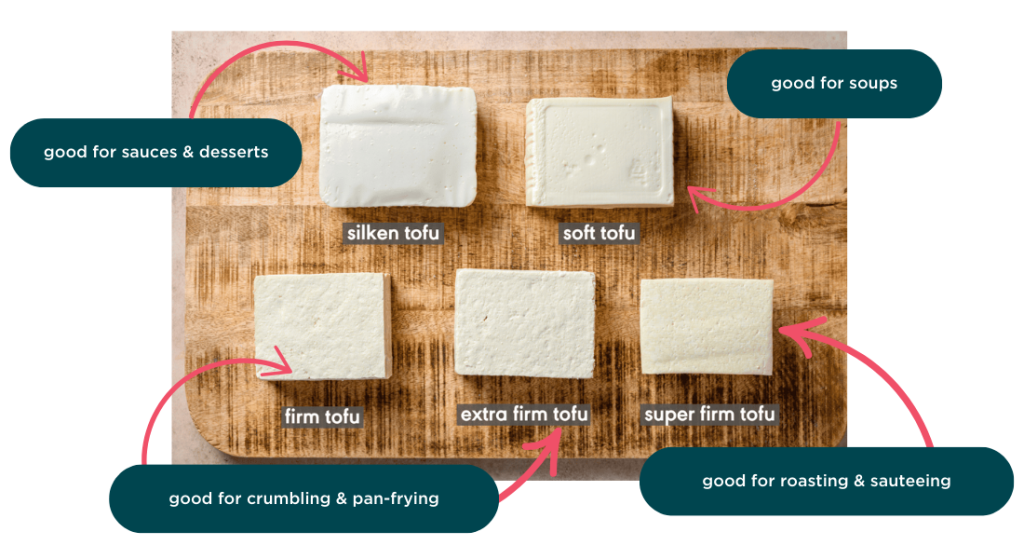Tofu is a popular plant-based protein made from blended, fermented soybeans, much like cheese is made from cow’s milk. It’s known for how versatile it is and its ability to take on the flavor of whichever seasonings or sauces you add to it. Tofu is commonly used in Asian cooking and has become more popular in the West with rising interest in plant-based diets. Tofu is a good source of protein, calcium, and iron.
There are different textures of tofu, ranging from silken (softest, lowest in protein) to super firm (hardest, highest in protein).

Image from Rainbow Plant Life
Tips for Cooking Tofu
- Remove excess water by pressing tofu between a couple of clean dish towels. This helps tofu take on more flavor while cooking, and creates a firmer texture and crispness.
- Allow tofu to marinate in sauce overnight to help the tofu take on more flavor while cooking.
- Cook on a low heat & be patient! Because tofu is quite wet (even after draining), it sticks to a pan until it’s crispy enough to lift off. Cook on a low-medium heat to prevent burning.
Simple Baked Tofu Recipe
Yield: 4 servings
- Ingredients:
- 1 block (about 16 ounces) super firm tofu
- 1 tablespoon olive oil
- 1 tablespoon corn starch
- 1 teaspoon salt
- 1/2 teaspoon garlic powder
- 1/2 teaspoon black pepper
- Instructions:
- Heat oven to 400°F. Line a baking sheet with parchment paper and set aside.
- Slice tofu block into 2 even slabs. Lay a clean dish towel on a flat surface and place the slabs side-by-side on top of the towel. Cover with another clean dish towel and apply pressure to the tofu to remove excess water.
- Slice each tofu slab in half, then into evenly sized cubes.
- Add tofu cubes to a large mixing bowl. Drizzle with olive oil until evenly coated.
- Toss tofu in cornstarch, salt, garlic powder and black pepper until evenly coated.
- Arrange tofu in an even layer onto the parchment-covered baking sheet.
- Bake for 15 minutes, then flip each cube and bake for another 15-20 minutes, or until the tofu reaches your desired crispiness.
- Add baked tofu to a salad or stir fry or coat in your favorite sauce and pair with a starch and a veggie.
